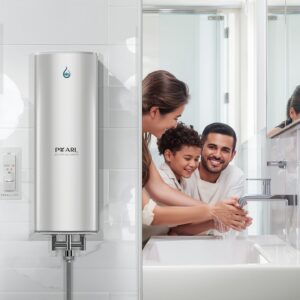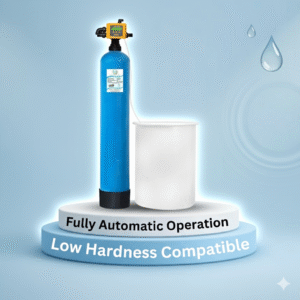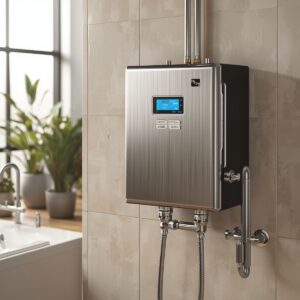Inline Carbon Filter – The Essential Guide for Cleaner, Better-Tasting Water
If you’ve ever wondered how to improve the taste and odor of your drinking water, the answer might be as simple as an inline carbon filter. Compact, effective, and affordable, these filters are a key component in many water purification systems. This guide covers everything you need to know about inline carbon filters, from how they work to how to choose the right one for your needs.
What is an Inline Carbon Filter?
An inline carbon filter is a type of water filter that uses activated carbon to remove impurities from water. The “inline” design means the filter is installed directly into the water line (pipe or tubing) rather than sitting inside a separate housing. Water passes through the filter, and the activated carbon adsorbs chlorine, chemicals, and organic compounds that affect taste and smell.
How Does an Inline Carbon Filter Work?
Activated carbon has a vast surface area full of tiny pores. As water flows through the filter, these pores trap and adsorb contaminants such as chlorine, pesticides, and volatile organic compounds (VOCs). This process improves the taste, odor, and safety of your water without adding chemicals.
Benefits of Using an Inline Carbon Filter
Improved Taste and Odor: Removes chlorine and organic compounds that cause bad taste and smell.
Compact Design: Small and easy to fit directly into your water line.
Low Maintenance: Typically only needs replacement every 6–12 months.
Versatile Applications: Works in refrigerators, ice makers, coffee machines, water purifiers, and under-sink systems.
Cost-Effective: More affordable than large filtration systems while still delivering great results.
Where Inline Carbon Filters are Used
Reverse Osmosis (RO) Systems: Often used as a post-filter to polish water before it reaches the tap.
Refrigerators and Ice Makers: Ensures clean, fresh-tasting ice and water.
Coffee Machines: Improves flavor by reducing impurities in brewing water.
RV and Caravan Water Systems: Compact enough for mobile setups.
Types of Inline Carbon Filters
Granular Activated Carbon (GAC) Filters: Use loose carbon granules; effective for taste and odor removal.
Carbon Block Filters: More densely packed carbon for finer filtration and longer lifespan.
Specialty Inline Filters: Infused with media to remove specific contaminants like lead or heavy metals.
How to Choose the Right Inline Carbon Filter
Check Flow Rate: Make sure the filter can handle the water flow of your system.
Look at Micron Rating: Lower micron rating means finer filtration.
Compatibility: Ensure the inlet/outlet size matches your tubing.
Certifications: NSF or equivalent certifications indicate safety and performance.
Replacement Interval: Choose a filter that fits your maintenance routine.
Installation Tips
Shut off your water supply before installing.
Cut the water line where the filter will sit.
Use quick-connect fittings for easy installation.
Flush the filter with water after installation to remove carbon dust.
Maintenance and Replacement
Inline carbon filters are low-maintenance but not zero-maintenance. Replace them as recommended by the manufacturer (usually every 6–12 months or after a set number of gallons). Failing to replace on time can reduce water quality and flow rate.
Inline Carbon Filter vs. Traditional Carbon Filter Cartridges
Inline Filter: Self-contained unit installed directly in the water line.
Traditional Cartridge: Requires a separate filter housing.
Inline filters save space and simplify installation, making them ideal for small systems and appliances.
Price Range of Inline Carbon Filters
In India, basic inline carbon filters for home RO systems typically cost between ₹250–₹600. Premium or specialty models may go up to ₹1,000 or more depending on capacity and brand.
Conclusion
An inline carbon filter is a simple, powerful way to improve water quality in your home or business. By removing chlorine, odors, and unwanted chemicals, it ensures every sip or ice cube tastes fresh and clean. With their compact size, low cost, and easy installation, inline carbon filters are a must-have for anyone who wants better-tasting water without hassle.
FAQs
Q1: How often should I replace my inline carbon filter?
Every 6–12 months depending on usage and water quality.
Q2: Can I install an inline carbon filter myself?
Yes, most models are designed for DIY installation with quick-connect fittings.
Q3: Does an inline carbon filter remove TDS?
No, it mainly removes chlorine, taste, and odor. You’ll need RO or other technology for TDS reduction.
Q4: Where is an inline carbon filter used in an RO system?
It’s usually installed as a post-filter after the RO membrane.
Q5: Are inline carbon filters reusable?
No, they are disposable and should be replaced at the recommended interval.


